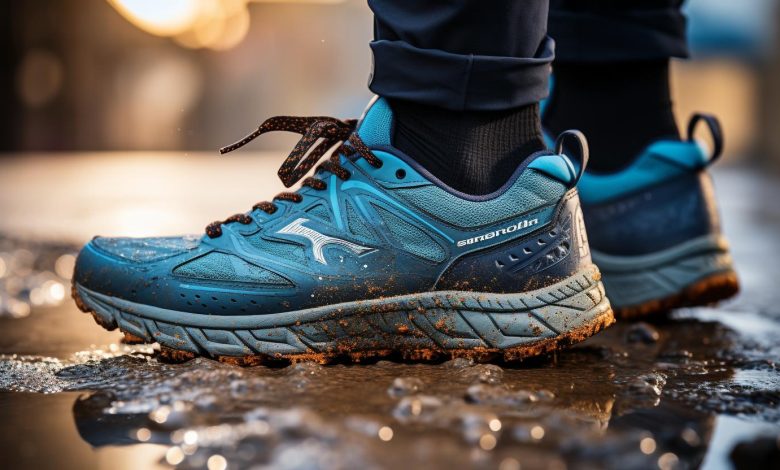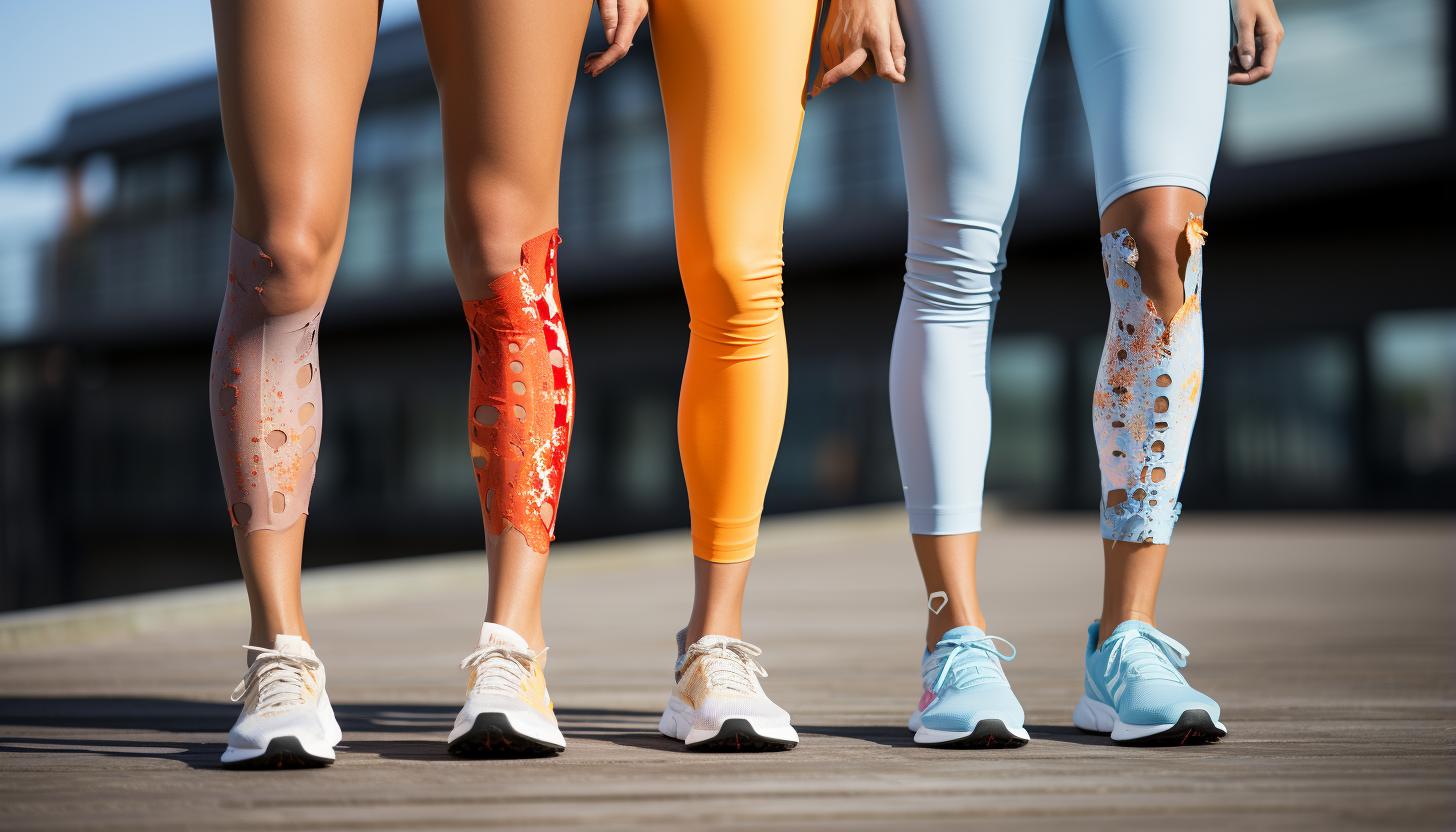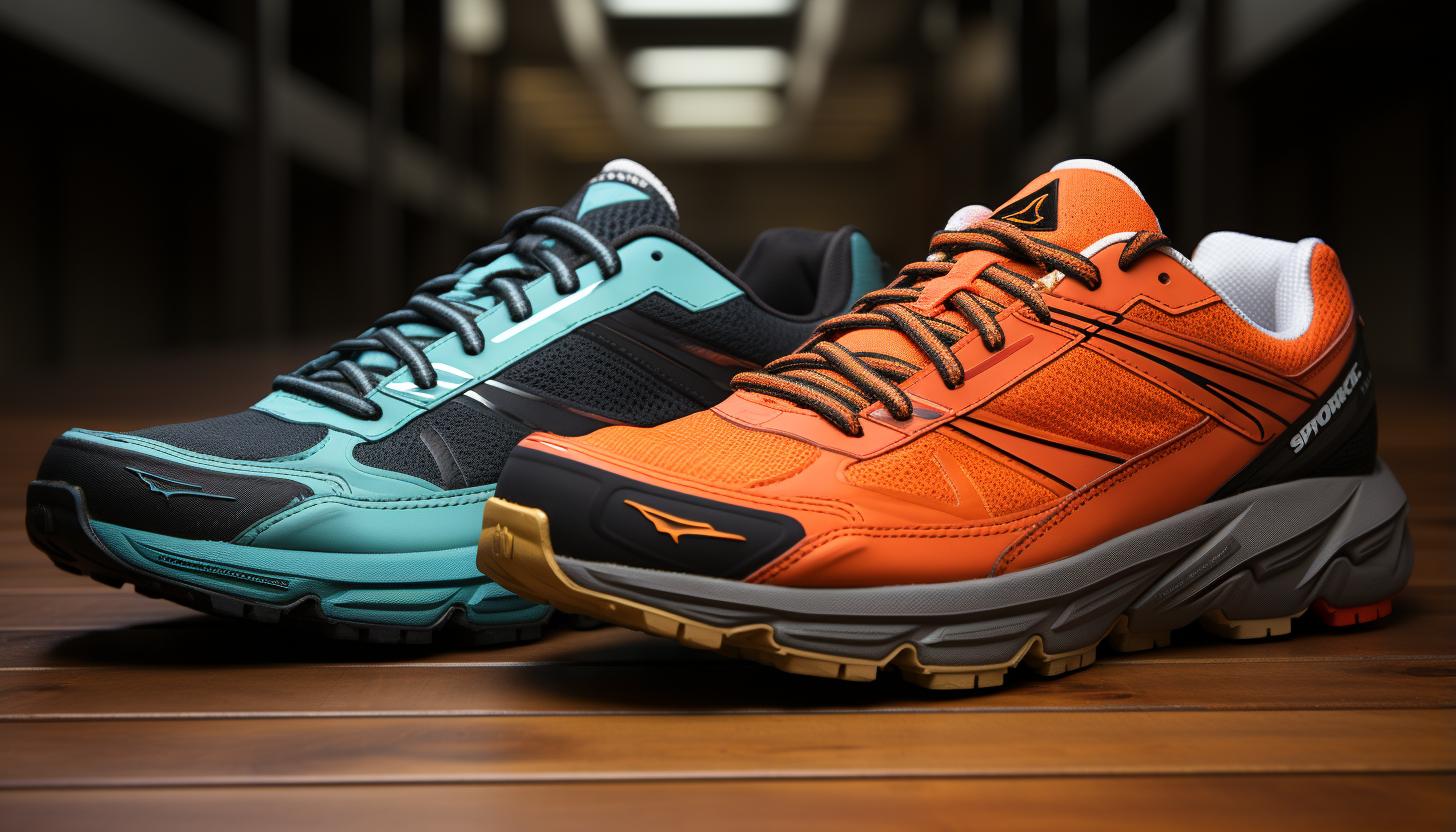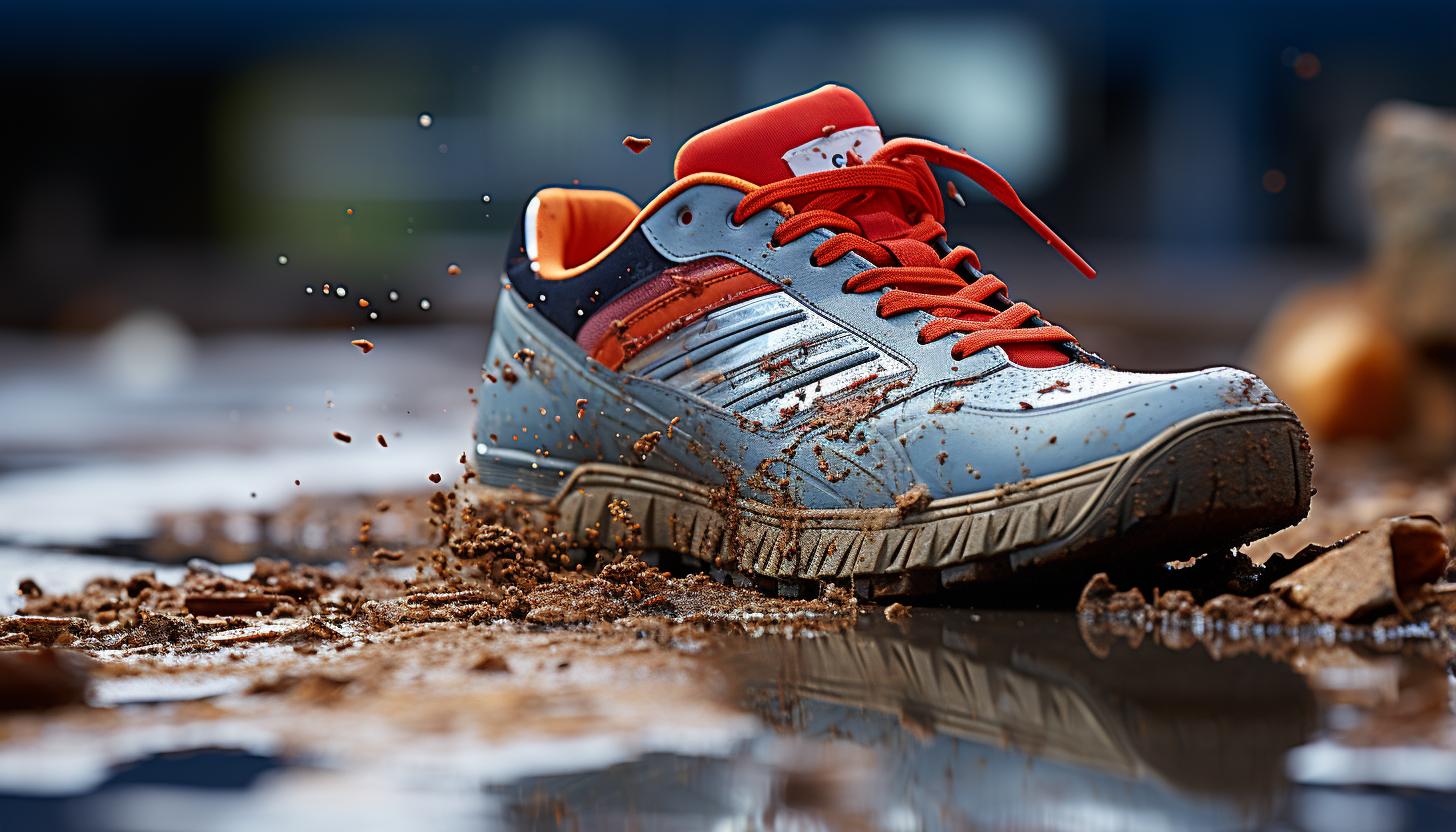The Importance of Proper Footwear in Preventing Running Injuries

Imagine yourself running through a beautiful forest, feeling the exhilaration of each stride. But suddenly, a sharp pain shoots through your ankle, bringing you to a halt.
Don’t let this be your reality. In this article, we will explore the importance of proper footwear in preventing running injuries. By understanding how the right shoes can protect your feet and support your body, you can keep running with confidence and enjoy the freedom of movement without fear of injury.
5 Common Running Injuries and How Footwear Can Help Prevent Them

If you want to avoid common running injuries, you should make sure your footwear provides proper support and cushioning. Proper footwear is essential in preventing common foot conditions that can result from running. Conditions such as plantar fasciitis, shin splints, and stress fractures are often caused by inadequate support or improper shoe sizing.
One of the most important factors in preventing these injuries is proper shoe sizing. Ill-fitting shoes can lead to blisters, calluses, and even more serious problems like bunions or hammertoes. When selecting running shoes, it’s crucial to have your feet measured by a professional who understands the intricacies of foot anatomy. They will be able to measure both the length and width of your feet to ensure a perfect fit.
Another aspect to consider is the level of cushioning provided by your footwear. Running puts significant pressure on your feet and joints, so having adequate cushioning can help absorb some of this impact and reduce the risk of injury. Look for shoes with ample padding in the midsole area, which will provide extra shock absorption.
The Role of Proper Cushioning and Support in Injury Prevention

To prevent injuries while running, it is important to make sure your shoes provide adequate cushioning and support. Proper cushioning and support are crucial factors in injury prevention during running. Here are three important reasons why:
1. Shoe durability: Shoes that are made with durable materials and construction techniques can help prevent injuries by providing long-lasting support and cushioning. When the shoes maintain their structural integrity over time, they can better absorb shock and reduce impact forces on your feet and joints.
2. Relationship between shoe weight and injury risk: The weight of your shoes can affect your risk of injury. Heavier shoes can increase the strain on your muscles, tendons, and joints, increasing the likelihood of developing overuse injuries such as stress fractures or tendonitis. Opting for lightweight shoes can help reduce this risk by minimizing the load placed on your lower extremities.
3. Impact absorption: Adequate cushioning in running shoes helps to absorb shock during each footstrike, reducing the impact forces transmitted through your body. This is especially important when running on hard surfaces like concrete or pavement, which can contribute to repetitive stress injuries if not properly absorbed.
Choosing the Right Shoe Type for Your Running Style and Terrain

When selecting the right shoe for your running style and terrain, consider factors such as pronation, cushioning level, and outsole grip. Pronation control and stability are essential elements to consider in order to prevent injuries. Pronation refers to the natural inward rolling motion of the foot when it lands on the ground during a stride. Depending on your pronation type, you may need shoes that provide either more support or more flexibility.
Minimalist shoes and barefoot running have gained popularity in recent years. These types of shoes aim to mimic the feeling of running barefoot while still providing some protection from sharp objects and uneven surfaces. However, it is crucial to note that transitioning to minimalist shoes or barefoot running should be done gradually, as it requires strengthening different muscles in the feet and lower legs.
To help you make an informed decision about which shoe is best for you, here is a table outlining different types of running shoes based on pronation control/stability:
| Shoe Type | Pronation Control/Stability |
|---|---|
| Neutral | Minimal |
| Stability | Moderate |
| Motion Control | Maximum |
Choosing the right shoe type can greatly impact your performance and reduce the risk of injury. Now let’s explore how shoe fit plays a role in both injury risk and performance improvement.
The Impact of Shoe Fit on Injury Risk and Performance

Investing in shoes that fit properly is crucial for reducing the risk of injury and improving your performance. When it comes to running, finding the right shoe size is essential. Ill-fitting shoes can lead to a host of problems, including blisters, calluses, and even stress fractures.
To ensure you find the perfect fit, consider the following:
1. Shoe sizing: Don’t rely solely on your usual shoe size when purchasing running shoes. Different brands and styles may vary in their sizing, so it’s important to measure your feet accurately and try on multiple sizes before making a decision.
2. Foot pronation: Understanding your foot pronation is key in selecting the appropriate shoe type. Pronation refers to how your foot rolls inward while walking or running. There are three types: neutral pronation, underpronation (supination), and overpronation. Each requires different levels of support and cushioning to prevent injuries.
3. Get fitted by an expert: Consider visiting a specialty running store where trained professionals can analyze your gait, assess your arch type and recommend the right shoe for you based on these factors.
Remember that a well-fitting shoe should provide ample room in the toe box, snugness around the midfoot without constriction, and proper cushioning throughout. By investing in shoes that fit properly, you’ll reduce the risk of injury and enhance your overall running performance.
The Importance of Regularly Assessing and Updating Your Running Shoes

Regularly assessing and updating your running shoes is crucial for maintaining optimal performance and reducing the risk of discomfort or injury. One important aspect to consider is the importance of professional fitting. Getting your feet measured and analyzed by a trained professional can help identify any specific needs or issues that may affect your shoe selection. A proper fit ensures that your shoes provide adequate support, stability, and cushioning, which are essential for preventing injuries.
In addition to proper fitting, the material of your running shoes also plays a significant role in injury prevention. Different materials offer varying levels of flexibility, breathability, and durability. It’s important to choose a shoe material that suits your individual needs and preferences. For example, if you have a history of foot problems or conditions such as plantar fasciitis, choosing a shoe with good arch support and shock absorption can help alleviate pain and reduce the risk of further injury.
Regularly assessing and updating your running shoes not only helps prevent discomfort or injury but also allows you to take advantage of advancements in footwear technology. Newer models often incorporate innovative features that enhance performance while minimizing stress on the body. So don’t wait until you start experiencing pain or discomfort – prioritize regular assessment and updates to ensure you’re always running at your best while keeping injuries at bay.
Conclusion
In conclusion, proper footwear plays a paramount role in preventing running injuries. By providing adequate cushioning and support, the right shoes can greatly reduce the risk of common running injuries.
Additionally, choosing the correct shoe type for your running style and terrain further enhances injury prevention. Remember that ill-fitting shoes not only increase your risk of injury but also hinder performance.
Therefore, regularly assessing and updating your running shoes is crucial for maintaining optimal foot health and minimizing injury risk.
So step up, select smartly, and stride safely!






